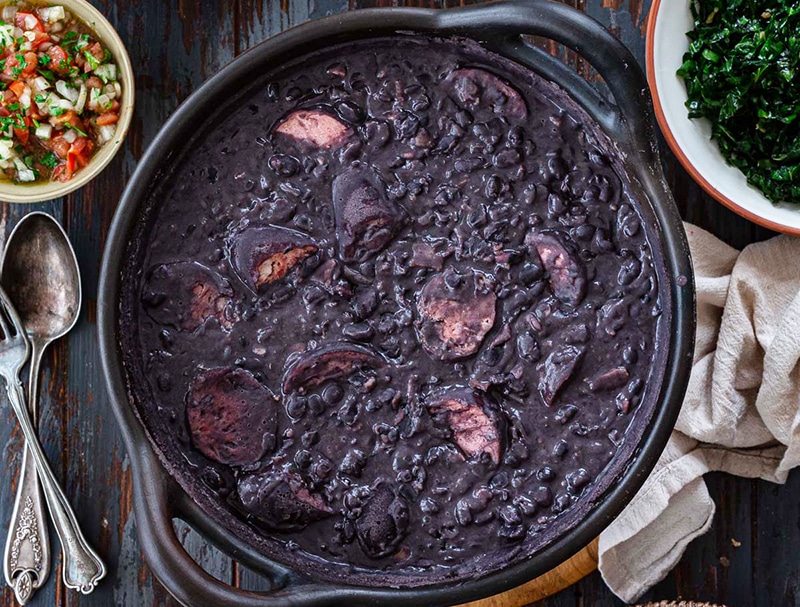The history of: Feijoada

Feijoada, often revered as the national dish of Brazil, is a hearty stew of black beans and pork that embodies the complex history and cultural fusion of Brazilian society. This rich, flavourful dish tells a story of colonialism, slavery and culinary innovation, tracing a lineage that spans continents and centuries.
The roots of feijoada stretch back to the Portuguese colonisation of Brazil in the 16th century. The dish is often associated with the African slaves brought to Brazil by the Portuguese, who were given the leftover parts of the pork – the ears, tail, and feet – and combined these with black beans, a staple in their diet. From these humble beginnings, feijoada evolved, absorbing influences from the indigenous people of Brazil and the European settlers, to become a symbol of Brazilian identity.
However, the narrative that feijoada was created by slaves has been contested by some historians and culinary experts, who argue that the dish is more likely to have been derived from European traditions, particularly the Portuguese cozido, a slow-cooked stew of beans, vegetables and meats. This perspective suggests that feijoada represents a blend of culinary practices, adapted to the ingredients available in the New World, rather than a dish born solely out of necessity.
Regardless of its exact origins, feijoada as it is known today is a testament to Brazil’s multicultural heritage. The dish varies from region to region, reflecting the diverse geography and cultural makeup of the country. In some areas, feijoada is prepared with a variety of smoked meats and sausages, while in others, it is made simpler, with fewer ingredients. Yet, at its core, feijoada remains a dish meant for sharing, often served on weekends and at gatherings of family and friends, accompanied by rice, collard greens, orange slices, and farofa (toasted cassava flour).
The ritual of preparing and eating feijoada is as important as the dish itself. It is a time for togetherness and celebration, an opportunity to pause and enjoy the company of loved ones. This communal aspect of feijoada underscores its role in Brazilian culture, not just as a culinary delight but as an expression of the country’s spirit of hospitality and warmth.
Feijoada’s journey from a meal of necessity to a national treasure is reflective of the broader history of Brazil, a country shaped by the confluence of different peoples and cultures. It embodies the resilience and creativity of the Brazilian people, their ability to transform simple ingredients into a dish that is rich in flavour and history.
In recent years, feijoada has transcended its national boundaries, gaining popularity around the world as a representation of Brazilian cuisine. Its global appeal lies not only in its taste but also in its story, a narrative of survival, adaptation and unity.
As feijoada continues to be celebrated within Brazil and beyond, it serves as a reminder of the country’s complex past and vibrant cultural tapestry. It is a dish that invites everyone to the table, offering a taste of Brazil’s soul, a blend of traditions and flavours that is as diverse and rich as the country itself.
